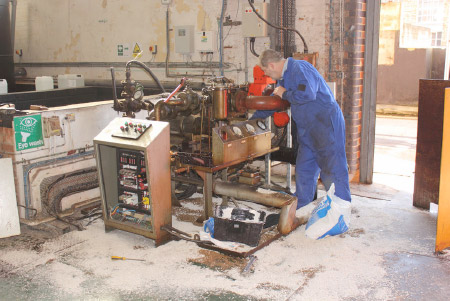 Unplanned release of a chemical can have devastating effects. Skin and eye burns, damage to the lungs, fire and explosion, corrosive damage to materials, pollution of air, soil, and water, and danger to the public are just some of the possible consequences of a chemical spill.
Unplanned release of a chemical can have devastating effects. Skin and eye burns, damage to the lungs, fire and explosion, corrosive damage to materials, pollution of air, soil, and water, and danger to the public are just some of the possible consequences of a chemical spill.
The time to deal with a chemical spill is long before it happens, by rehearsing what you will do and obtaining the supplies you will need for self- protection and clean-up.
First, you need to learn all you can about the chemicals used and stored in your work area. What are the hazards? What would happen if the chemical were exposed to air, oxygen, a spark, water, or even motion? Is the chemical corrosive, causing burns to human tissue?
Here are some basic procedures for dealing with a spill:
- Alert people in the area of the spill.
- Call the appropriate emergency numbers, which should be posted at each telephone.
- Attend to any injured persons, removing them from exposure and getting them to a safety shower if necessary.
- Depending on the nature of the chemical, you might need to open windows and doors to provide ventilation, close up the affected area to contain spills, or turn off heat and other ignition sources.
- If you are trained and authorized, use the appropriate materials to absorb or contain the spill.
- For instance, you might have kits to neutralize spilled acids or bases.
- For other chemicals, you could be required to sprinkle an absorbent litter on a spill or surround the spill with a dam.
Follow procedures…keep safety in mind!!
Download flyer: STOTW_544_Chemical Spill Safety Download Spanish Flyer: STOTW_544_Chemical Spill Safety_esp

